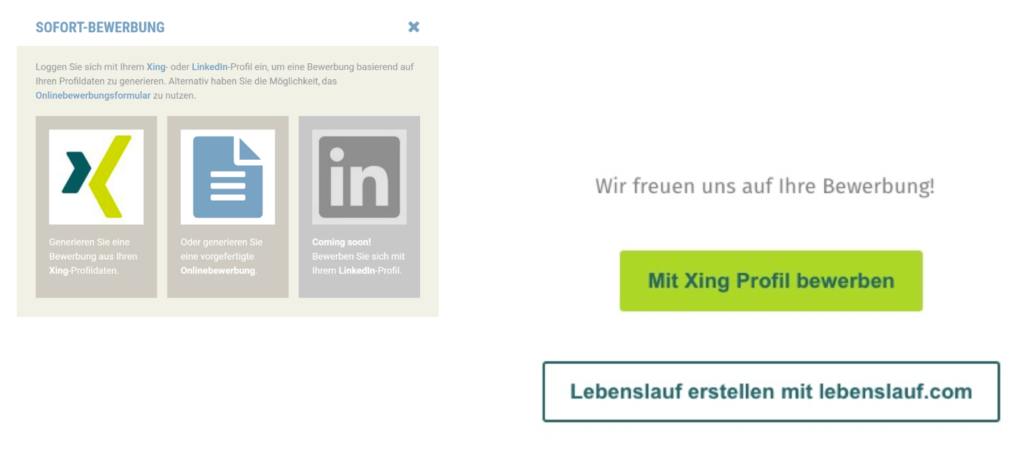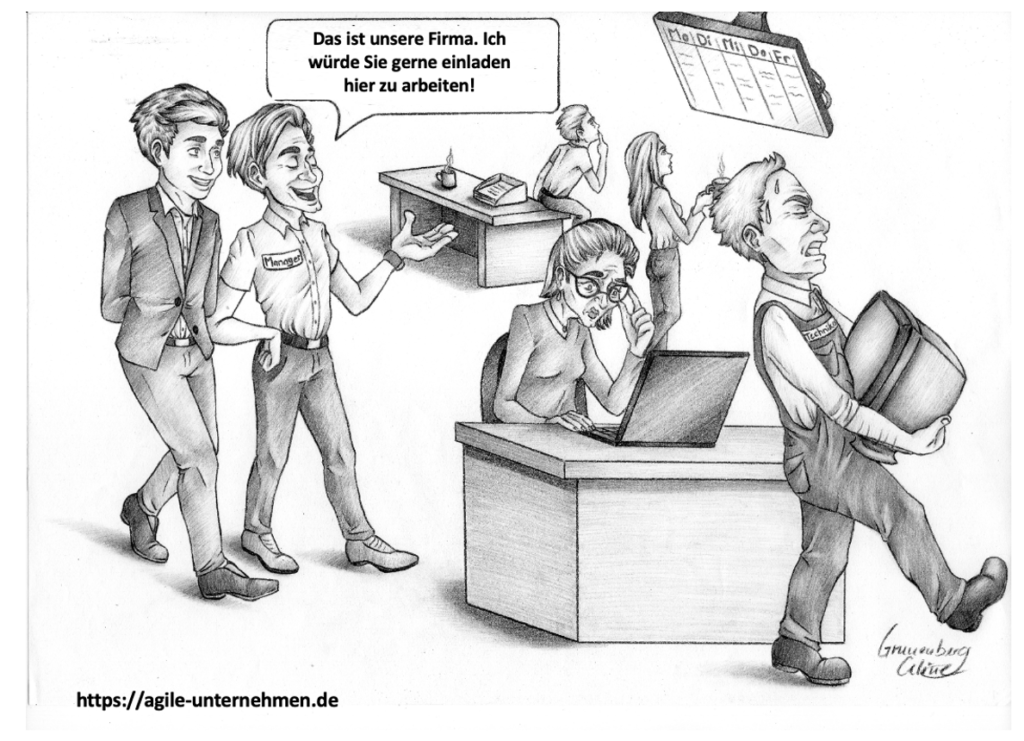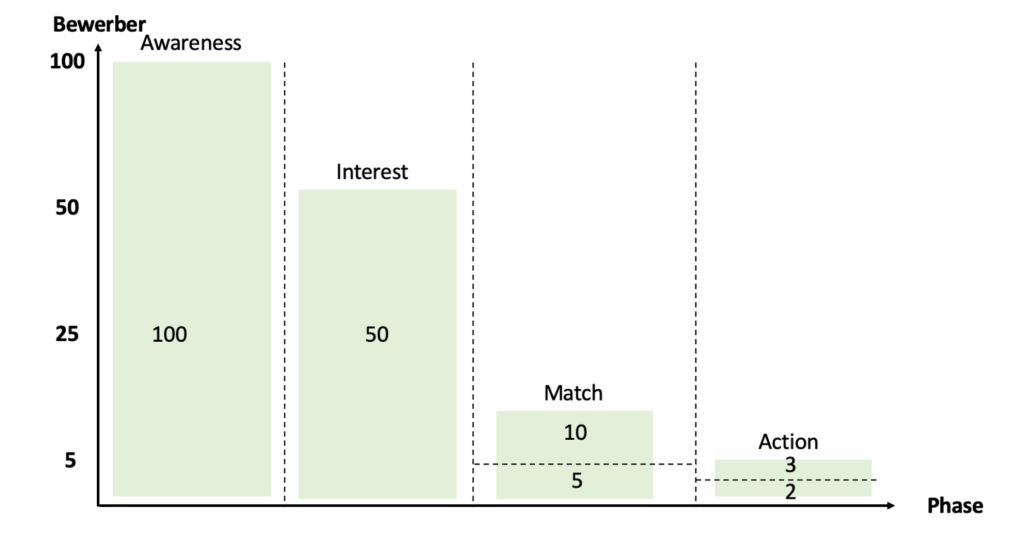According to current survey of 1000 executives In Germany, the shortage of skilled workers is one of the top 3 critical blockers of company growth. Vacant positions in particular lead to increased workload for existing employees and to the rejection of profitable orders.
Especially the demographic change (Generation Y / Z), as well as always increasing internet speeds , Home office and high competition in the recruitment of skilled workers force companies into a real battle for good talent. One solution for this can be the digitization of the HR process. In the following, I would like to show you a new type of HR funnel that I built together with customers during my time as a consultant.
Difference to classic recruiting
In traditional recruiting, job advertisements were used to select applicants in such a way that only suitable applicants apply for suitable job advertisements. Unfortunately, applicants often sent numerous applications. The consequence is numerous job interviews, which cost the company time and block executives.
The HR funnel in this article is intended to address the typical behavior of digitization:
Simply apply quickly and without obligation and see what happens .
A representative of Generation Z
Let’s not kid ourselves: our world is faster and less binding. The classic selection and the high matching process are far too time-consuming in a digital world. So that the high number of applicants can start, the process should be supported by technology.
HR funnel
In the following I used the typical sales funnel, which selects customers like a funnel. The aim is to attract as many interested people as possible and to select potentially interested people through various steps. In the following I present the process for the HR process and explain it again in more detail below. Basically, the message of the picture is that we draw the attention of as many potential candidates as possible to us and encourage them to apply. Then we check its suitability and get them to sign a contract.

Step 1: Awareness
The first step is to use digital media such as job portals and social networks to send as many applicants as possible to the company’s website and draw their attention. In addition, you should also use analog media such as employee recommendations and job fairs. To do this, define your channels and put people in the HR team full-time to draw the attention of applicants.
Important: It’s not about finding the right employees, but simply getting as many candidates as possible to go to the website and apply. Mass instead of class!

Step 2: Interest
Now you have managed to get numerous applicants to your website. You now want skilled workers to apply quickly and easily. Use a one-click application without a cover letter. Simply with the help of Xing or with a PDF CV.
The advantage of the one-click application is that you will quickly receive a large number of applications, as the preparation of documents for applicants alongside the job is often perceived as too time-consuming. The disadvantage is that you have to check numerous applications afterwards. This disadvantage is to be compensated in step 3.

Step 3: match
After a successful one-click application, send the applicants a link to the online assessment. You can use various questions to check whether the applicant fits the company both personally and professionally.
In doing so, you compensate for the numerous job interviews that you would normally have to hold. Especially since you will receive masses of unstructured applications through the first two steps, it is impossible to check them by hand.

Step 4: action
You now invite the few remaining applicants to an interview. This means that you have significantly fewer job interviews than before. You can also be sure that the applicants invited are a good match for the company. It is important that you qualify the applicants slightly beforehand according to company division and then hire them in an appreciative interview. Since most applicants do not start at the company until 3 months later, you have enough time to find a job at a later point in time.

Conclusion
In conclusion, I would like to give a few figures. In my experience, out of 100 applicants that we have won over at trade fairs, etc., around 50% actually apply with the one-click application. About 10 of these go into the match process. We often reject 50% of these, i.e. 5 applicants. We then invite the remaining 5 and post 2 of them.

So that you can now deploy the applicants flexibly, you should also establish new structures in the company. The idea is that you, for example, as an IT service provider, simply hire good applicants and then decide in which team they will work. This allows you to remain flexible, as often no one knows exactly what an applicant who starts in 3 months will then do exactly in the company. I recommend the Spotify model approach.
Reading tip: Spotify model
[werbung] [fotolia]


